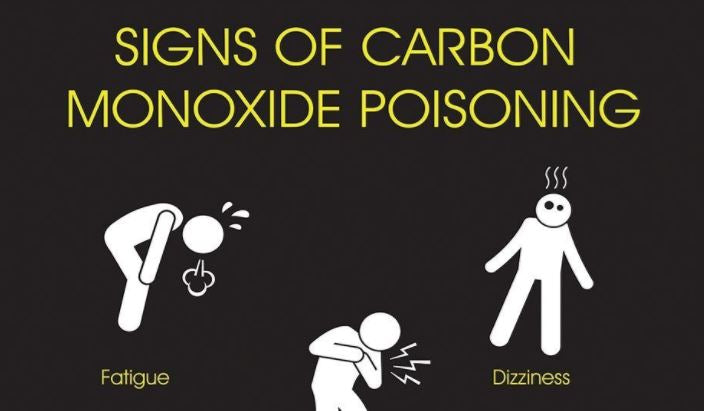
Know the Signs of Carbon Monoxide Poisoning

It’s important to be aware of the hazardous signs of carbon monoxide poisoning this winter!
With frigid temperatures plummeting most of the country this winter season, now is the ideal time to talk about how to stay protected from carbon monoxide poisoning. Especially since every year, approximately 500 people die from unintentional carbon monoxide poisoning and more than 4,000 are hospitalized, per the Centers for Disease Control and Prevention (CDC).
Carbon monoxide is caused by inhaling combustion fumes that replace the oxygen in your red blood cells with carbon monoxide. This prevents oxygen from reaching your tissues and organs and can lead to serious tissue damage, or even death.
Since carbon monoxide is a colorless, odorless, tasteless gas – knowing the signs of possible carbon monoxide poisoning can’t be overstated because it can kill you.
How does carbon monoxide poisoning start?
Improperly ventilated appliances and engines in tightly sealed or enclosed spaces can allow dangerously high levels of carbon monoxide to accumulate, per the Center for Disease Control and Prevention (CDC).
When power outages occur during emergencies such as winter storms – even hurricanes – the use of alternative sources of fuel or electricity for heating often occur. CO is found in combustion fumes, such as stoves, generators, lanterns, and gas ranges, or by burning charcoal and wood. Placing any of the above items inside a house or small improperly ventilated area will create deadly levels of carbon monoxide poisoning.
How to protect yourself and your family from carbon monoxide poisoning:
- Install a battery-operated or battery back-up CO detector in your home and check or replace the battery when you change the time on your clocks each spring and fall. If the detector sounds leave your home immediately and call 911.
- Never use a generator, charcoal grill, camp stove, or other gasoline or charcoal-burning device inside your home, basement, or garage or near a window.
- Never use a generator, pressure washer, or any gasoline-powered engine less than 20 feet from any window, door, or vent.
- Have your heating system, water heater, and any other gas, oil, or coal burning appliances serviced by a qualified technician every year.
- Seek prompt medical attention if you suspect CO poisoning and are feeling dizzy, light-headed, or nauseated.
- Never keep a running a car or truck in a garage attached to your house, even if you leave the door open.
- Don’t heat your house with a gas oven.
- Don’t burn anything in a stove or fireplace that isn’t vented.
Here are eight symptoms of carbon monoxide to watch out for:
- A dull headache
- Weakness
- Dizziness
- Nausea or vomiting
- Shortness of breath
- Confusion
- Blurred vision
- Loss of consciousness
Carbon monoxide is an odorless, colorless, tasteless gas that kills more than 500 Americans every year. Never use generators, grills, camp stoves, or other gasoline or charcoal-burning devices inside your home, basement, or garage or near a window. If it’s too cold, stay with a family member, friend, or look for a local shelter.

